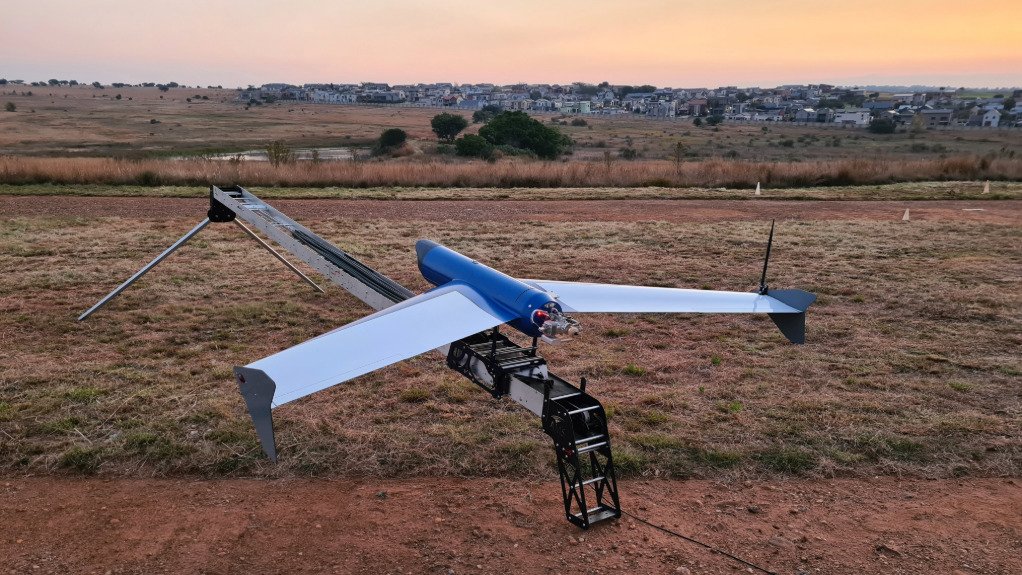Drone potential hindered by regulatory hurdles, lack of funding


READY TO LAUNCH South Africa boasts a talented drone manufacturing industry that is impeded by lack of support
While the South African drone manufacturing sector could increase its participation in the international market, regulatory hurdles, as well as a lack of funding and government support, are some of the challenges hindering market growth.
South Africa has relatively positive geopolitical relationships with most countries, which enable local manufacturers to reach a wider international market, thus positioning them for diverse opportunities, says unmanned aerial vehicle (UAV) manufacturer Aerial Monitoring Solutions MD Adam Rosman.
Local manufacturers can benefit significantly from tapping into the international market, as those customers offer a premium for UAVs that meet their specific requirements.
South Africa boasts a talented, albeit small, drone manufacturing industry that has a reputation in the international market for developing innovative, high-quality, reliable and cost-effective products on which the industry should capitalise, says Rosman.
However, stringent regulations are stifling innovation and market expansion in the local drone industry, regulated by the South African Civil Aviation Authority (SACAA).
Although the SACAA has updated some of its processes to make applications easier, the laws have not adapted yet, as regulations have not evolved with the industry’s rapid growth.
“The laws haven’t been changed since 2015, so we are still working now with almost decade-old laws, which is an issue, and they need to be amended,” Rosman adds.
There are stringent regulations for the local drone industry, compared with those of other countries, and while the framework is well intentioned, particularly with its focus on safety, it poses obstacles to local manufacturers and operators.
The SACAA is inundated with various applications, ranging from certifying drone pilots to approving proof-of-concepts, which has, consequently, resulted in a backlog, with delays in products reaching the market.
Rosman also notes that the approval process for drones is often so time-consuming, complex and expensive that local manufacturers have their drones approved and launched in neighbouring countries as opposed to locally.
During drone development, manufacturers have to conduct an experimental fly process, which is complicated and difficult to carry out successfully. This, in turn, results in specialised consultations to assist manufacturers in acquiring approvals.
To fast-track approval applications and prevent backlogs, Rosman calls for the development of an experimental licence and experimental areas to enable manufacturers to conduct experimental flights in designated areas.
“If we had test areas, I could design and build a drone and test it within a few days or weeks. Shortly thereafter, I could potentially put it in a full application because I’ve now tested the drone and proven that it is safe, reliable and fulfills the criteria. We could have much faster product development,” he enthuses.
Further, amid drone technology’s rapid development, Rosman also calls for a more collaborative relationship with the SACAA to keep abreast of developments.
To this end, Rosman has formed a “loose association” of local manufacturers to facilitate more collaboration with the SACAA, which has been positively received by the SACAA, he explains.
“Hopefully this will help negate any potential disagreements that could arise,” Rosman says.
Getting off the Ground
Despite the drone manufacturing industry being relatively new, it has already contracted over the past decade and, while more international demand could reinvigorate the industry, it does not have the required investor and government support to profit from renewed demand.
Rosman explains that only some established manufacturers have the necessary financial support to invest in research and development, as well as withstand industry challenges.
Further, a significant number of new entrants, such as startups, face difficulties in trying to gain a foothold in the market, while smaller businesses struggle to remain financially viable.
Substantial capital expenditure is required to launch a manufacturing venture, as this demands equipment, while securing investors that understand the lengthy timeframe required to gain market traction is challenging.
He asserts that, during this period, funding is imperative for covering operational costs, including salaries. It can also be difficult to meet the requirements of initiatives such as broad-based black economic empowerment, which can limit manufacturers’ ability to access funding.
Therefore, despite securing work, projects and customers, funding remains insufficient to cover ongoing operational costs, owing to projects having long lead times, which can, typically, take six to nine months.
Developing the drone industry could generate a significant number of skilled jobs comprising aerospace engineers, aeronautical engineers and mechanical engineers, along with associated technicians.
While drone manufacturers might have to deal with long lead times, Rosman adds that it is nonetheless quicker to develop drones, as “full-size aircraft usually take five or more years to get off the ground in terms of establishing companies and acquiring accreditations”.
Companies can develop a proof-of-concept for a small drone within four to five weeks and start marketing it to potential customers. Larger, more complex drones require a longer period to reach the market and can take a few months to develop, but the timeframe is still shorter than those of aircraft.
The industry should, therefore, be leveraged for socioeconomic growth, particularly as it is the more fast-paced and growth-intensive sector within the larger aerospace industry, he concludes.
Article Enquiry
Email Article
Save Article
Feedback
To advertise email advertising@creamermedia.co.za or click here
Comments
Press Office
Announcements
What's On
Subscribe to improve your user experience...
Option 1 (equivalent of R125 a month):
Receive a weekly copy of Creamer Media's Engineering News & Mining Weekly magazine
(print copy for those in South Africa and e-magazine for those outside of South Africa)
Receive daily email newsletters
Access to full search results
Access archive of magazine back copies
Access to Projects in Progress
Access to ONE Research Report of your choice in PDF format
Option 2 (equivalent of R375 a month):
All benefits from Option 1
PLUS
Access to Creamer Media's Research Channel Africa for ALL Research Reports, in PDF format, on various industrial and mining sectors
including Electricity; Water; Energy Transition; Hydrogen; Roads, Rail and Ports; Coal; Gold; Platinum; Battery Metals; etc.
Already a subscriber?
Forgotten your password?
Receive weekly copy of Creamer Media's Engineering News & Mining Weekly magazine (print copy for those in South Africa and e-magazine for those outside of South Africa)
➕
Recieve daily email newsletters
➕
Access to full search results
➕
Access archive of magazine back copies
➕
Access to Projects in Progress
➕
Access to ONE Research Report of your choice in PDF format
RESEARCH CHANNEL AFRICA
R4500 (equivalent of R375 a month)
SUBSCRIBEAll benefits from Option 1
➕
Access to Creamer Media's Research Channel Africa for ALL Research Reports on various industrial and mining sectors, in PDF format, including on:
Electricity
➕
Water
➕
Energy Transition
➕
Hydrogen
➕
Roads, Rail and Ports
➕
Coal
➕
Gold
➕
Platinum
➕
Battery Metals
➕
etc.
Receive all benefits from Option 1 or Option 2 delivered to numerous people at your company
➕
Multiple User names and Passwords for simultaneous log-ins
➕
Intranet integration access to all in your organisation

















